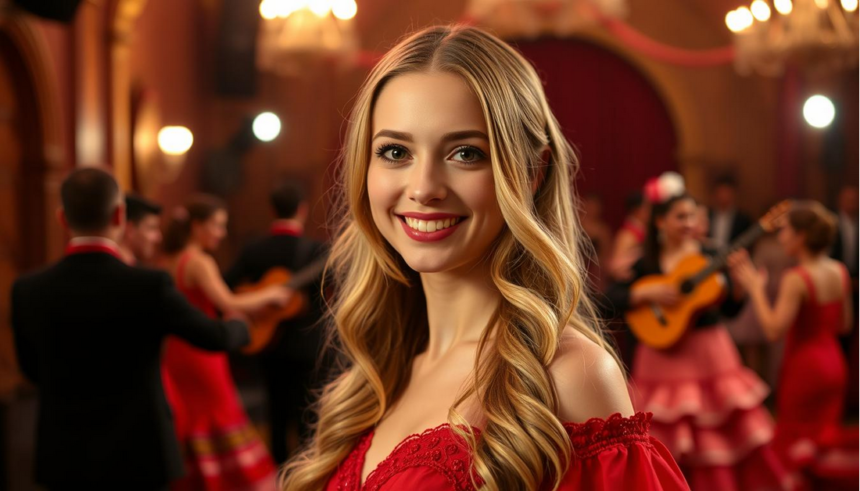India customers to view on amazon.in
Seville Flamenco Nights: Dance, Music, and Culture
Immerse yourself in the vibrant world of Seville Flamenco Nights, where the passion of traditional Spanish dance comes alive. This captivating art form is a true representation of Andalusian culture, blending Gypsy, Moorish, and Jewish influences.
- The Soul of Andalusia: Understanding Flamenco’s Rich Heritage
- Origins and Evolution of Flamenco in Southern Spain
- UNESCO Recognition: Flamenco as Intangible Cultural Heritage
- Seville Flamenco Nights: Dance, Music, and Culture Unveiled
- The Three Pillars: Cante (Song), Baile (Dance), and Toque (Guitar)
- Distinctive Styles and Techniques
- The Role of Palmas (Hand-Clapping) and Jaleos (Shouts of Encouragement)
- Emotional Expression: Understanding Duende in Flamenco
- The Distinctive Flamenco Scene of Seville
- Types of Flamenco Performances You Can Experience
- Tablaos: Commercial Flamenco Shows
- Peñas Flamencas: Authentic Flamenco Clubs
- Spontaneous Performances and Street Flamenco
- Top Venues for Flamenco Shows in Seville
- Historic Venues: Casa de la Memoria and El Arenal
- Intimate Settings: La Casa del Flamenco and Museo del Baile Flamenco
- Off-the-Beaten-Path Flamenco Experiences
- What to Expect at a Seville Flamenco Performance
- Insider Tips for an Authentic Flamenco Experience
- Best Times to Attend Flamenco Shows
- Avoiding Tourist Traps
- Combining Flamenco with Other Seville Nightlife
- Beyond the Performance: Immersive Flamenco Experiences
- Flamenco Museums and Cultural Centers
- Flamenco Workshops and Classes for Visitors
- Flamenco Festivals and Special Events in 2025
- Conclusion: Embracing the Passion of Seville’s Flamenco Tradition
- FAQ
- What is Flamenco, and how is it related to Seville?
- What can I expect from a Flamenco show in Seville?
- What are the different types of Flamenco performances available in Seville?
- How do I choose the best Flamenco venue in Seville?
- What is the dress code for attending a Flamenco show in Seville?
- Can I take Flamenco lessons or workshops in Seville?
- Are there any Flamenco festivals or special events in Seville that I should know about?
- How can I make the most of my Flamenco experience in Seville?
- What are some insider tips for avoiding tourist traps and having an authentic Flamenco experience?
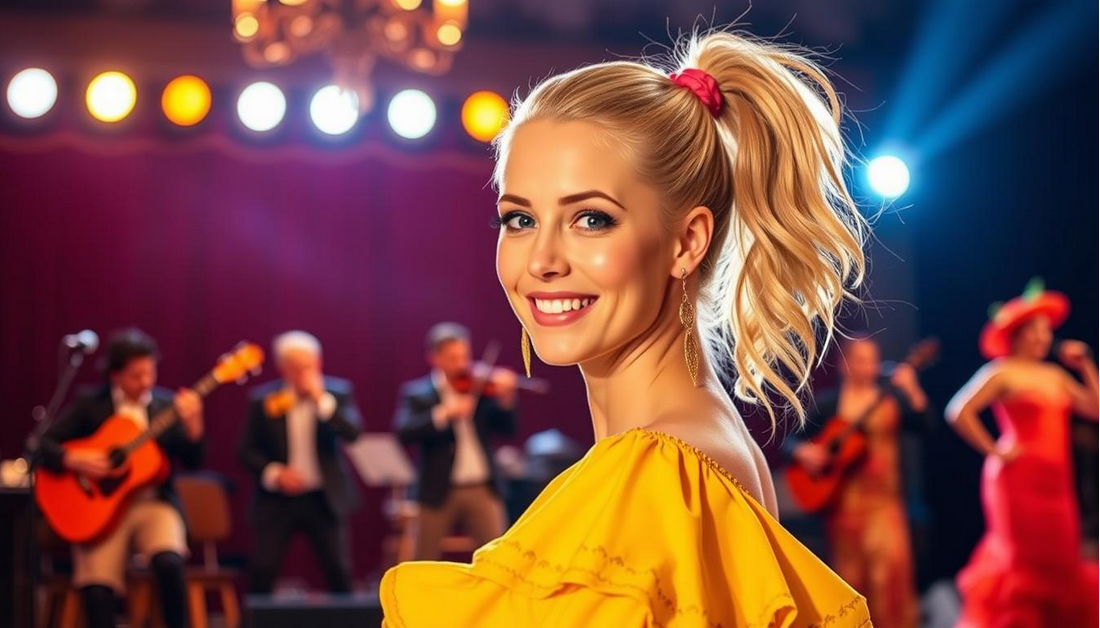
As you explore the rich heritage of Flamenco in Seville, you’ll discover the significance of this traditional dance and its role in the city’s cultural landscape. Our guide will walk you through the best venues and performances, providing insider tips to make your Flamenco experience unforgettable.
Key Takeaways
- Discover the best venues for an authentic Flamenco experience
- Learn about the cultural significance of Flamenco in Seville
- Get insider tips on the top Flamenco performances
- Understand the unique influences that shape Flamenco
- Explore the rich heritage of traditional Spanish dance
The Soul of Andalusia: Understanding Flamenco’s Rich Heritage
The soul of Andalusia beats in the rhythm and passion of Flamenco. This traditional Spanish art form is a complex tapestry woven from the diverse cultural influences of the region.
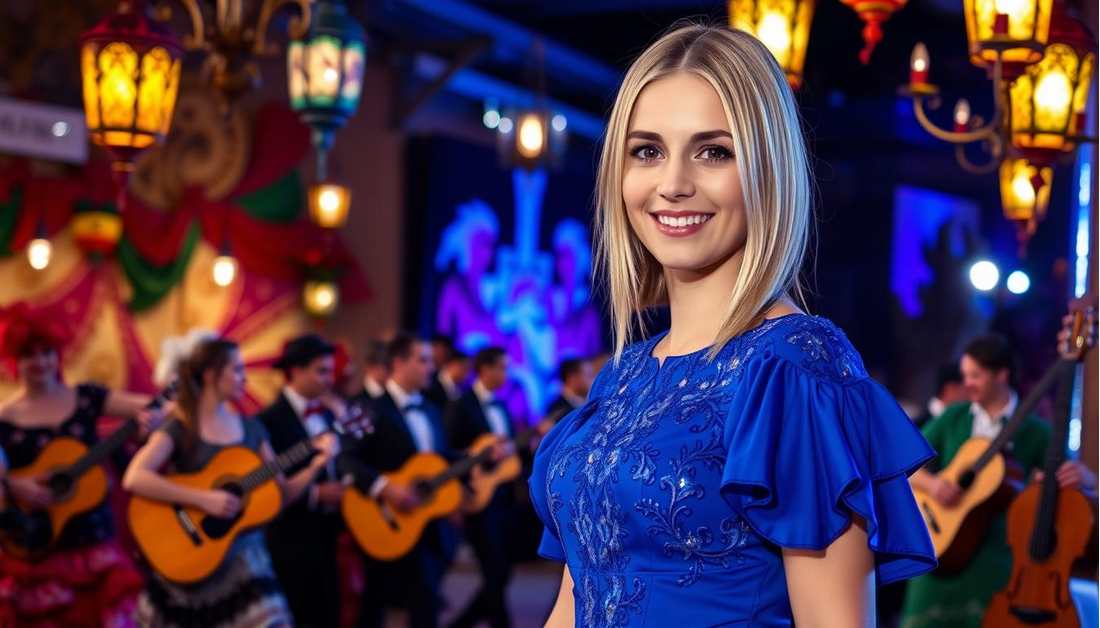
Origins and Evolution of Flamenco in Southern Spain
Flamenco originated in the Andalusia region, particularly in the provinces of Seville, Cádiz, and Granada. Its evolution is deeply intertwined with the history of Andalusia, reflecting the cultural exchanges and influences of various communities.
Gypsy, Moorish, and Jewish Influences
The Gypsy community played a significant role in shaping Flamenco, bringing their own musical traditions and emotional depth. The Moorish influence is evident in the intricate rhythms and melodies, while Jewish musical traditions have also contributed to the richness of Flamenco. These diverse influences have blended together to create the unique sound and style of Flamenco.
From Marginalized Art to National Treasure
Once considered a marginalized art form, Flamenco has gained recognition as a national treasure in Spain. Its journey from the fringes to the mainstream is a testament to its enduring appeal and cultural significance.
UNESCO Recognition: Flamenco as Intangible Cultural Heritage
In 2010, Flamenco was inscribed on UNESCO’s Representative List of the Intangible Cultural Heritage of Humanity. This recognition acknowledges Flamenco’s importance not only in Spain but also globally, highlighting its role in cultural exchange and understanding.
The UNESCO recognition has further cemented Flamenco’s status as an integral part of Spain’s cultural identity, encouraging its preservation and promotion worldwide.
Seville Flamenco Nights: Dance, Music, and Culture Unveiled
Flamenco nights in Seville unveil a rich tapestry of dance, music, and culture that is quintessentially Spanish. At the heart of this vibrant cultural expression are the three fundamental elements that make Flamenco so captivating.
The Three Pillars: Cante (Song), Baile (Dance), and Toque (Guitar)
Flamenco is built around cante (song), baile (dance), and toque (guitar playing). Each of these pillars brings its unique style and technique to a Flamenco performance, creating a dynamic and engaging spectacle.
Distinctive Styles and Techniques
The cante is characterized by its powerful and emotive vocals, while baile is known for its passionate and intricate footwork. Toque, on the other hand, provides the melodic foundation with the guitar. “The complexity and richness of Flamenco music lie in its ability to convey deep emotions through these three pillars.”
The Role of Palmas (Hand-Clapping) and Jaleos (Shouts of Encouragement)
Audience participation is a crucial aspect of Flamenco, with palmas (hand-clapping) and jaleos (shouts of encouragement) adding to the energetic atmosphere. This interactive element creates a symbiotic relationship between the performers and the audience, enhancing the overall experience.
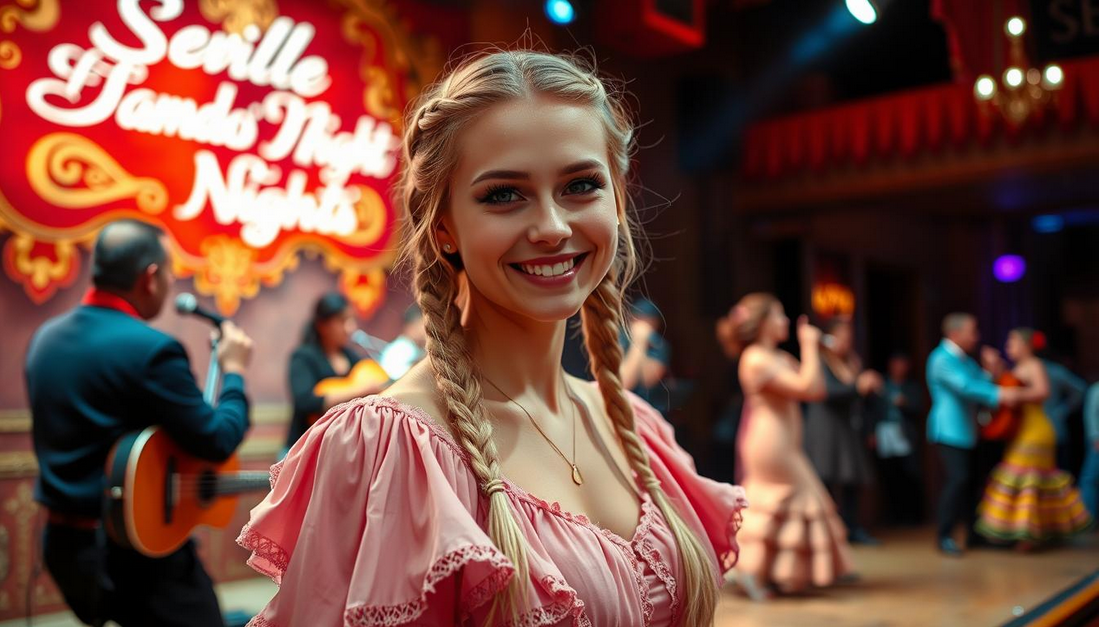
Emotional Expression: Understanding Duende in Flamenco
The concept of duende is central to understanding the emotional intensity of Flamenco. It refers to the deep, emotional expression that resonates with both the performers and the audience. As the famous Spanish poet Federico García Lorca once said,
“Duende is a power, not a will. It is a struggle, not a thought.”
This profound emotional connection is what makes Flamenco a truly unique and captivating art form.
In Seville’s Flamenco nights, the combination of cante, baile, toque, and the emotional expression of duende comes together to create an unforgettable experience. The city’s rich cultural heritage and the passionate performances blend to make every Flamenco night a celebration of Spanish culture.
The Distinctive Flamenco Scene of Seville
Seville’s Flamenco scene is a vibrant tapestry woven with history, passion, and culture. At its heart lies the historic neighborhood of Triana, a place that has been instrumental in shaping the city’s Flamenco identity.
Triana: The Historic Flamenco Neighborhood
Triana is more than just a neighborhood; it’s the soul of Seville’s Flamenco culture. As you wander through its streets, you’ll discover significant Flamenco landmarks that have played a crucial role in the art form’s evolution.
Walking Tour of Flamenco Landmarks
A walking tour through Triana reveals the rich history of Flamenco in Seville. Visit the Calle Betis, a street lined with Flamenco bars and venues, and explore the Castillo de San Jorge, a historic fortress that now serves as a museum showcasing the neighborhood’s history.
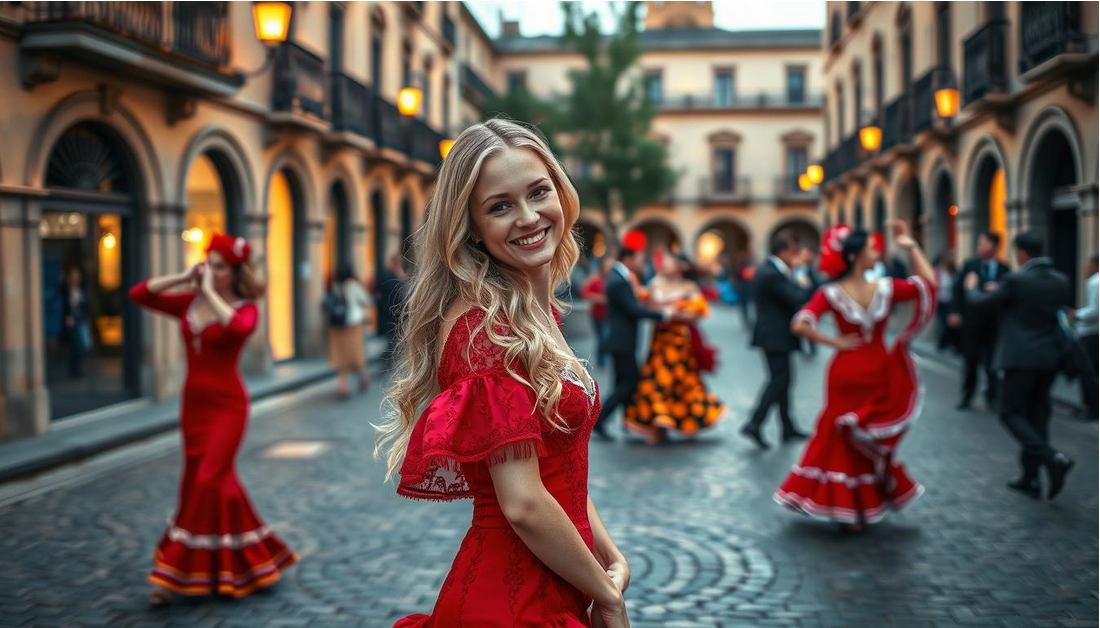
Triana is also home to many local legends who have contributed to the development of Flamenco. From famous dancers to renowned musicians, these individuals have left an indelible mark on the art form. Their legacy continues to inspire new generations of Flamenco artists.
How Seville Shaped Modern Flamenco
Seville’s influence on modern Flamenco cannot be overstated. The city’s unique cultural melting pot has given rise to a distinct Flamenco style that is both deeply rooted in tradition and open to innovation. This blend of old and new has helped to keep Flamenco vibrant and relevant in the modern era.
The Seville Flamenco scene continues to thrive, attracting visitors from around the world who come to experience the city’s rich cultural heritage. Whether you’re a seasoned Flamenco enthusiast or just discovering the art form, Seville offers an unforgettable experience.
Types of Flamenco Performances You Can Experience
From polished commercial shows to authentic, spontaneous performances, Seville’s Flamenco scene has something for everyone. The city’s rich cultural heritage is reflected in its diverse range of Flamenco experiences, catering to different tastes and preferences.
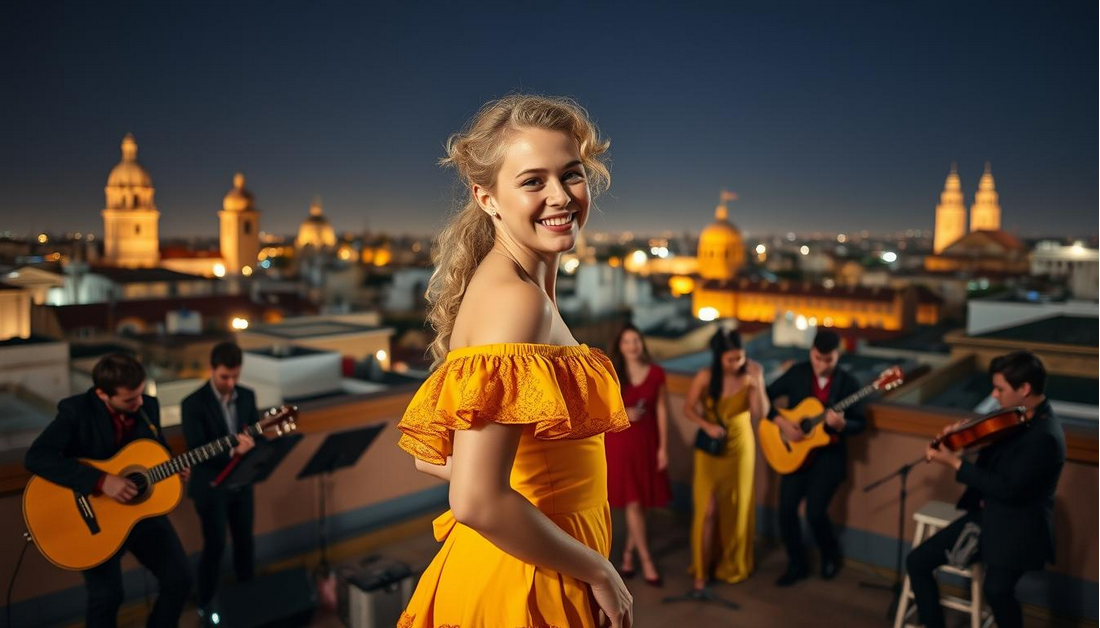
Tablaos: Commercial Flamenco Shows
Tablaos are venues that host commercial Flamenco shows, offering a polished and professional experience. These shows are typically performed by skilled dancers and musicians, providing an entertaining and engaging spectacle for audiences. While some may view tablaos as more tourist-oriented, they still offer a high-quality introduction to Flamenco.
Peñas Flamencas: Authentic Flamenco Clubs
In contrast to tablaos, peñas flamencas are clubs that showcase more authentic and spontaneous Flamenco performances. These intimate settings allow for a deeper connection between the performers and the audience, creating a unique and memorable experience. Peñas flamencas are a great way to experience the raw emotion and passion of Flamenco.
Spontaneous Performances and Street Flamenco
For a truly immersive experience, visitors can seek out spontaneous Flamenco performances in Seville’s streets and plazas. These impromptu shows can be found in areas like the historic Santa Cruz neighborhood.
Where to Find Impromptu Flamenco in Seville
Impromptu Flamenco performances often take place in popular tourist areas and historic neighborhoods. Keeping an ear out for the sound of castanets or the strumming of a guitar can lead you to a memorable experience.
Recognizing Quality in Informal Settings
When experiencing Flamenco in informal settings, the quality can vary. Look for performances that showcase genuine passion and skill, as these are often the most memorable.
As “Flamenco is not just a style of music or dance; it’s a way of life.” This quote encapsulates the essence of Flamenco in Seville, where the art form is deeply ingrained in the city’s culture. Whether you opt for a staged show or stumble upon a street performance, the experience is sure to be unforgettable.
Top Venues for Flamenco Shows in Seville
The city of Seville is home to a diverse array of Flamenco venues, each providing a unique glimpse into this traditional Spanish dance. From historic sites to intimate settings and off-the-beaten-path experiences, Seville’s Flamenco venues cater to a wide range of interests and preferences.
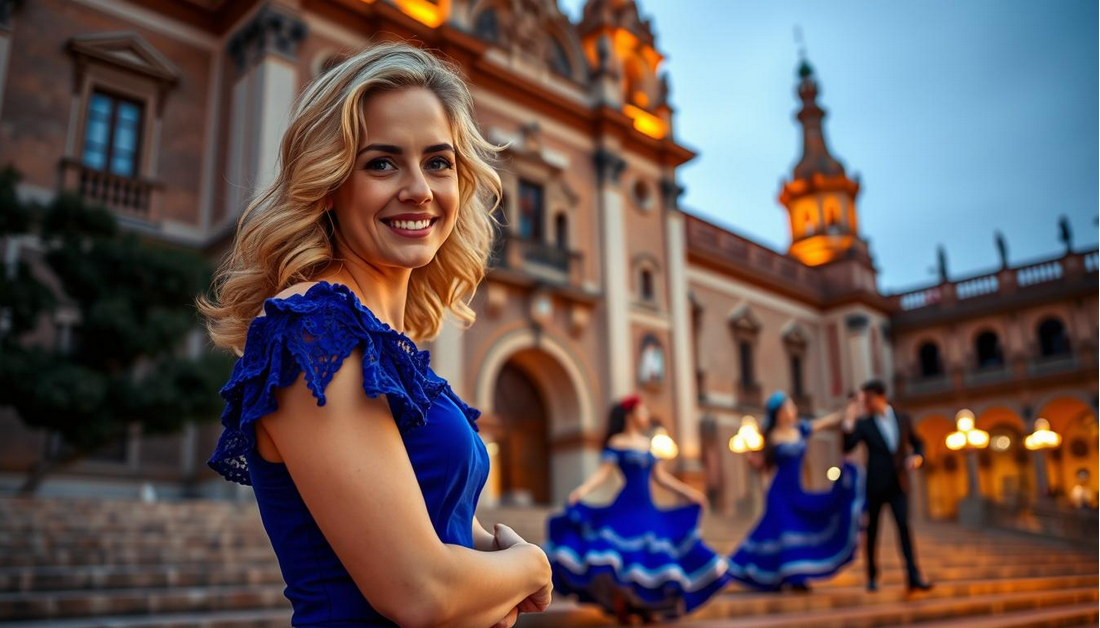
Historic Venues: Casa de la Memoria and El Arenal
For a truly authentic Flamenco experience, visitors often head to historic venues like Casa de la Memoria and El Arenal. Casa de la Memoria is known for its high-quality performances and intimate setting, making it a favorite among Flamenco enthusiasts. El Arenal, located in the heart of Seville’s historic district, offers a unique blend of traditional Flamenco and modern interpretations.
Intimate Settings: La Casa del Flamenco and Museo del Baile Flamenco
Those seeking a more intimate Flamenco experience can visit La Casa del Flamenco or the Museo del Baile Flamenco. La Casa del Flamenco provides an immersive experience with its cozy atmosphere and talented performers. The Museo del Baile Flamenco, as its name suggests, combines a museum with live performances, offering a deeper understanding of Flamenco’s history and cultural significance.
Off-the-Beaten-Path Flamenco Experiences
For the more adventurous, Seville offers several off-the-beaten-path Flamenco experiences. These venues provide a chance to enjoy Flamenco in unique and often more authentic settings.
Local Favorites: Casa Anselma and La Carbonería
Casa Anselma is a local favorite, known for its spontaneous and passionate Flamenco performances. La Carbonería, while not exclusively a Flamenco venue, often hosts Flamenco nights that are not to be missed. Both venues offer a glimpse into Seville’s vibrant, local Flamenco culture.
New Emerging Venues Worth Discovering
Seville’s Flamenco scene is constantly evolving, with new venues emerging to offer fresh perspectives on this traditional art form. Visitors willing to explore beyond the most well-known venues can discover these hidden gems, which often provide some of the most memorable Flamenco experiences.
What to Expect at a Seville Flamenco Performance
A flamenco show in Seville is more than just a performance; it’s an immersive experience into the heart of Andalusian culture. As you prepare to attend one of these captivating events, understanding what to expect can enhance your enjoyment and appreciation of the art form.
Show Format and Duration
Typically, a flamenco show in Seville lasts about 60 to 90 minutes, including an intermission. The performance features a series of palos (flamenco styles), showcasing the diversity and richness of flamenco music and dance. The show format often includes a mix of solo performances and ensemble pieces, ensuring a dynamic and engaging experience.
Dress Code and Etiquette
While there’s no strict dress code for attending a flamenco show, dressing elegantly is recommended to match the sophisticated atmosphere of the venues. Understanding the etiquette is crucial: applause is encouraged after each palos, and it’s customary to show appreciation for outstanding performances.
Appropriate Behavior During Performances
Audience members are expected to be respectful during the performances. This includes refraining from talking during the acts and turning off or silencing mobile devices.
Photography and Recording Policies
Generally, photography is allowed for personal use, but flash and video recording are often prohibited to avoid distracting the performers. It’s best to check with the venue for their specific policies.
Pricing and Booking Information
Ticket prices for flamenco shows in Seville vary depending on the venue and the show’s popularity. Booking in advance is recommended, especially during peak tourist seasons.
Online vs. In-Person Ticket Purchases
Tickets can be purchased online through the venue’s website or at the box office. Buying online can ensure availability, while purchasing in-person may offer more flexibility.
Price Ranges and What They Include
Ticket prices generally range from €30 to €100, often including a drink or tapas. Some premium experiences may offer additional perks like a meet-and-greet with the artists.
| Ticket Type | Price Range (€) | Includes |
|---|---|---|
| Standard | 30-50 | Entry to the show, one drink |
| Premium | 60-100 | Entry to the show, tapas, one drink, meet-and-greet |
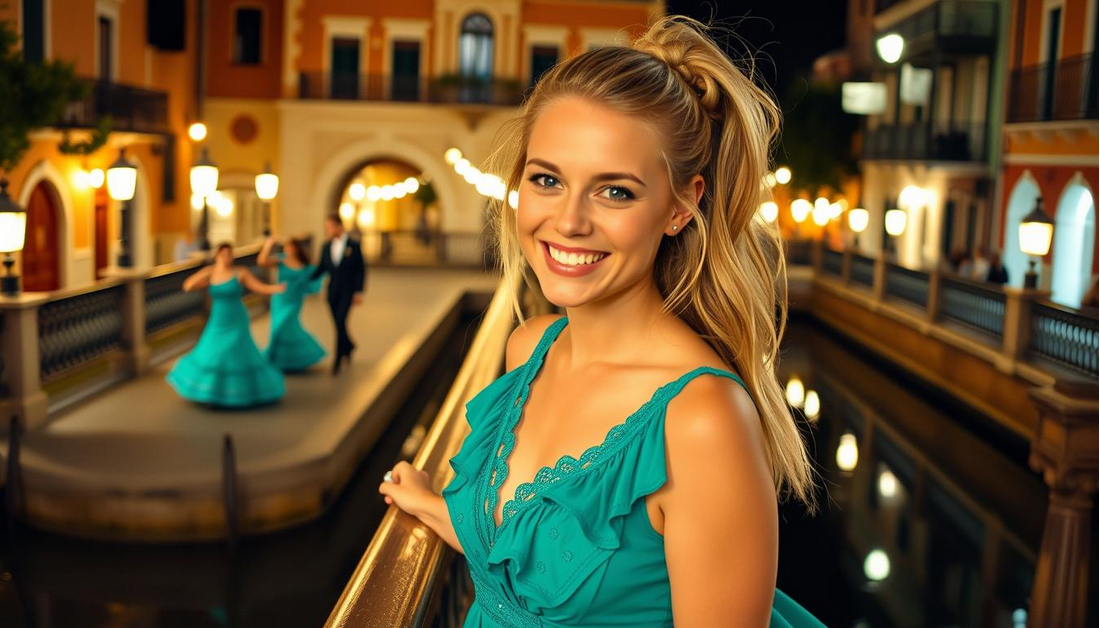
Insider Tips for an Authentic Flamenco Experience
To truly immerse yourself in Seville’s Flamenco culture, it’s essential to know when and where to experience it. With a few insider tips, you can elevate your Flamenco night from a simple show to an unforgettable experience.
Best Times to Attend Flamenco Shows
The timing of your Flamenco experience can greatly impact its authenticity and enjoyment. Seville’s Flamenco scene is active year-round, but certain times are better than others.
Seasonal Considerations and 2025 Calendar Highlights
Seville’s climate is mild, making it a great destination for Flamenco enthusiasts at any time of the year. However, the summer months can be quite hot, so spring (March to May) and autumn (September to November) are ideal. In 2025, look out for the Bienal de Flamenco, a major Flamenco festival that takes place in September.
Weekday vs. Weekend Performances
Weekdays often offer a more authentic Flamenco experience, as the crowds are smaller and the atmosphere can be more intimate. Weekend shows, while more popular, can sometimes feel more touristy.
Avoiding Tourist Traps
Not all Flamenco shows are created equal. To avoid tourist traps, look for venues that are frequented by locals and feature performers with a strong reputation in the Flamenco community. Peñas Flamencas and smaller, independent tablaos are great places to start.
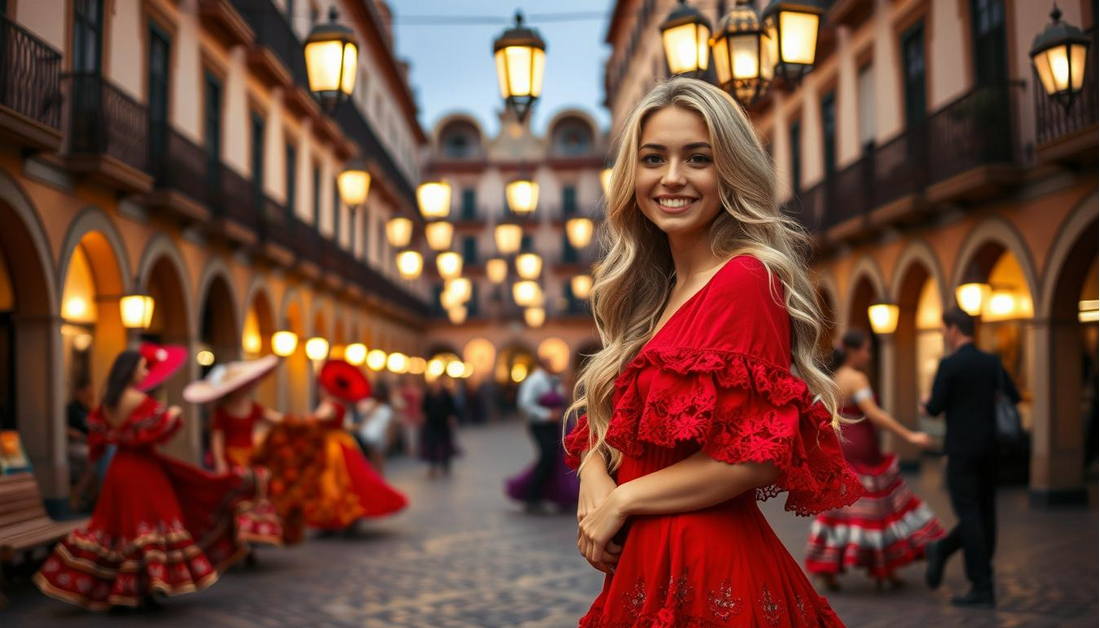
Combining Flamenco with Other Seville Nightlife
Seville’s nightlife is legendary, and Flamenco is just the beginning. After a night of Flamenco, you can enjoy tapas and local wine in one of the many bars around the city.
Tapas and Flamenco Combinations
Many venues offer dinner or tapas as part of the Flamenco experience. This can be a great way to enjoy local cuisine while taking in the show.
Late Night Options After Shows
Seville comes alive at night, and there’s always something to do after the Flamenco show. From late-night tapas bars to clubs and live music venues, you can keep the night going in style.
By following these insider tips, you can experience the best of Seville’s Flamenco scene and create memories that will last a lifetime.
Beyond the Performance: Immersive Flamenco Experiences
Beyond the captivating performances, Seville’s Flamenco culture is rich in history, museums, and interactive experiences. The city offers a variety of ways for visitors to immerse themselves in Flamenco, from educational institutions to live events.
Flamenco Museums and Cultural Centers
Seville is home to several museums and cultural centers dedicated to Flamenco. The Museo del Baile Flamenco is a prominent institution that showcases the history and artistry of Flamenco dance. These centers provide a deeper understanding of Flamenco’s roots and evolution.
Flamenco Workshops and Classes for Visitors
Visitors to Seville can participate in various Flamenco workshops and classes. These range from introductory lessons to more advanced, immersive programs.
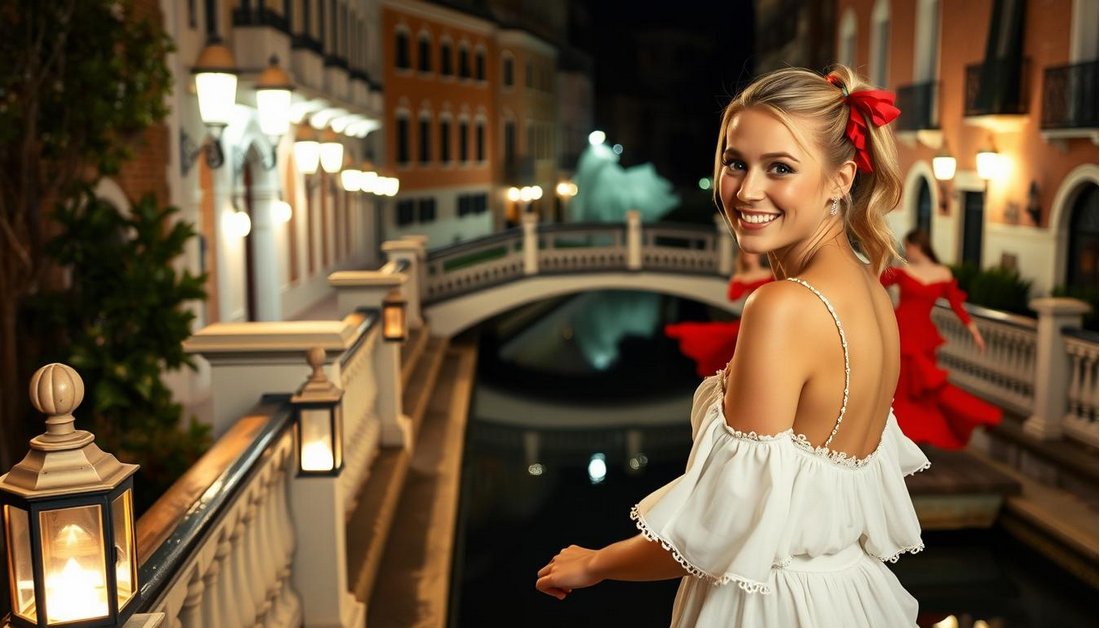
One-Day Introductory Lessons
For those new to Flamenco, one-day introductory lessons offer a taste of this expressive dance. Participants learn basic steps and techniques, guided by experienced instructors.
Week-Long Immersive Programs
For a deeper dive, week-long immersive programs allow participants to fully engage with Flamenco. These programs often include dance classes, guitar lessons, and cultural activities.
Flamenco Festivals and Special Events in 2025
Seville hosts several Flamenco festivals and special events throughout the year. In 2025, visitors can look forward to events that celebrate the art form’s diversity and passion.
| Event | Date | Location |
|---|---|---|
| Flamenco Festival | March 15-17 | Teatro de la Maestranza |
| Flamenco Night | April 20 | Casa de la Memoria |
| Flamenco Competition | June 10-12 | Auditorio Rocío Jurado |
Conclusion: Embracing the Passion of Seville’s Flamenco Tradition
Seville’s Flamenco tradition is a vibrant expression of the city’s passion for dance, music, and culture. As the heart of Andalusia, Seville offers an immersive Flamenco experience that captivates visitors from around the world.
The city’s Flamenco Nights are a testament to its rich cultural heritage, with various venues offering authentic performances that showcase the art form’s emotional intensity. From the historic neighborhood of Triana to the intimate settings of local tablaos, Seville’s Flamenco scene is a must-experience for anyone drawn to this traditional Spanish dance.
As you explore Seville’s nightlife, be sure to indulge in the city’s Flamenco culture, whether through a live performance, a workshop, or a visit to a Flamenco museum. The passion of Seville’s Flamenco tradition is sure to leave a lasting impression, making your visit to this captivating city an unforgettable experience.
FAQ
What is Flamenco, and how is it related to Seville?
Flamenco is a traditional Spanish dance and music style deeply rooted in the culture of Andalusia, particularly in Seville. It’s characterized by its passionate and expressive performances, often accompanied by guitar playing, singing, and hand-clapping.
What can I expect from a Flamenco show in Seville?
A Flamenco show in Seville typically includes a combination of dance, music, and singing. You can expect to see intricate footwork, emotional expressions, and energetic performances. The format and duration may vary depending on the venue and type of show.
What are the different types of Flamenco performances available in Seville?
Seville offers various types of Flamenco performances, including commercial shows in tablaos, authentic experiences in peñas flamencas, and spontaneous street performances. Each type provides a unique experience, ranging from polished shows to raw, emotional performances.
How do I choose the best Flamenco venue in Seville?
When choosing a Flamenco venue, consider factors like the type of performance, venue atmosphere, and location. Historic venues like Casa de la Memoria and El Arenal offer a traditional experience, while intimate settings like La Casa del Flamenco provide a more personal connection to the performers.
What is the dress code for attending a Flamenco show in Seville?
While there’s no strict dress code, it’s recommended to dress smartly and comfortably. Avoid overly casual or revealing clothing, and be prepared for a potentially crowded and warm environment.
Can I take Flamenco lessons or workshops in Seville?
Yes, Seville offers various Flamenco workshops and classes for visitors, ranging from one-day introductory lessons to week-long immersive programs. This is a great way to deepen your understanding and appreciation of Flamenco.
Are there any Flamenco festivals or special events in Seville that I should know about?
Seville hosts several Flamenco festivals and special events throughout the year, including highlights in 2025. These events offer a unique opportunity to experience Flamenco in a lively and festive atmosphere.
How can I make the most of my Flamenco experience in Seville?
To make the most of your Flamenco experience, consider combining it with other aspects of Seville’s nightlife, such as enjoying tapas and exploring late-night options after the shows. Additionally, be sure to respect the performers and audience members around you.
What are some insider tips for avoiding tourist traps and having an authentic Flamenco experience?
To avoid tourist traps, consider attending shows at local favorites like Casa Anselma or La Carbonería, and look for venues that offer a more intimate and authentic experience. Be wary of overly commercialized shows, and don’t be afraid to explore beyond the most popular venues.

